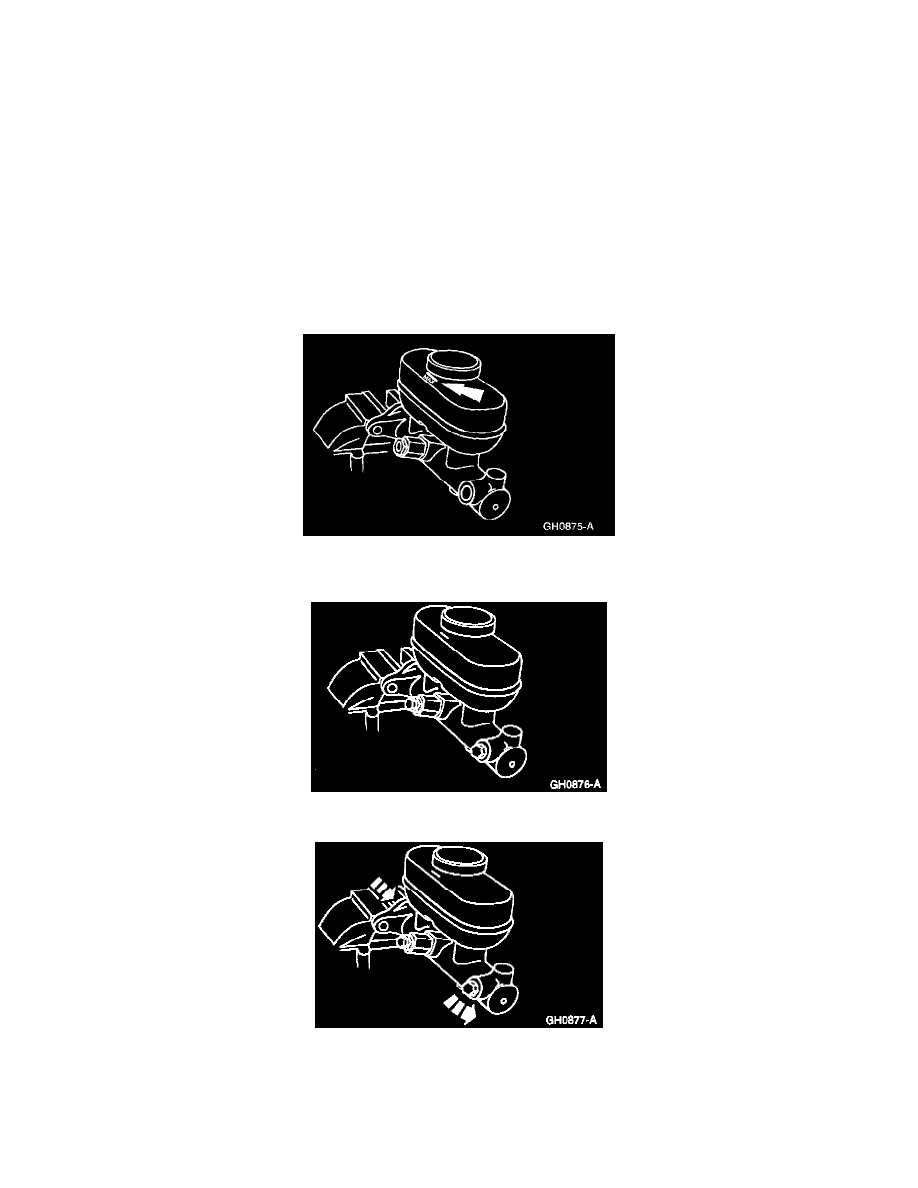Expedition 4WD V8-4.6L SOHC VIN 6 (1997)

Brake Bleeding: Service and Repair
Master Cylinder Bleeding
WARNING:
^
brake fluid contains polyglycol ethers and polyglycols. avoid contact with eyes. wash hands thoroughly after handling. If brake fluid
contacts eyes, flush eyes with running water for 15 minutes. Get medical attention if irritation persists. If taken internally, drink water
and induce vomiting. Get medical attention immediately.
CAUTION:
^
Do not allow the brake master cylinder reservoir to run dry during the bleeding operation. Keep the brake master cylinder reservoir filled with the
specified brake fluid. Never reuse the brake fluid that has been drained from the hydraulic system.
^
Brake fluid is harmful to painted and plastic surfaces. If brake fluid is spilled onto a painted or plastic surface, immediately wash it with water.
NOTE:
^
When any part of the hydraulic system has been disconnected for repair or replacement, air may get into the system and cause spongy brake pedal
action. This requires bleeding of the hydraulic system after it has been properly connected. The hydraulic system can be bled manually or with
pressure bleeding equipment Brake Bleeder.
1. Support the brake master cylinder body in a vise and fill the brake master cylinder reservoir with specified brake fluid.
^
Use High Performance DOT 3 Brake Fluid C6AZ-19S42-AB or DOT 3 equivalent meeting Ford specification ESA-M6C25-A, DOT 3.
2. Install plugs in the front and rear brake outlet ports. Bleed the front brake system first.
Loosen Plug
3. Loosen the plug in the front outlet port and slowly depress the primary piston.
